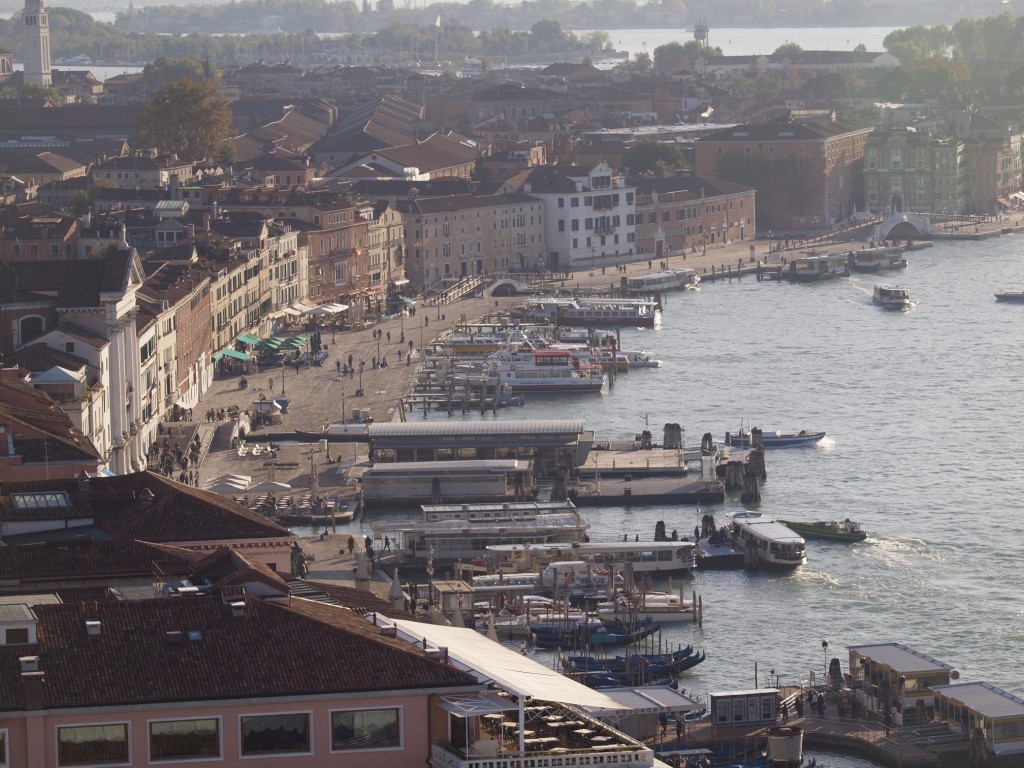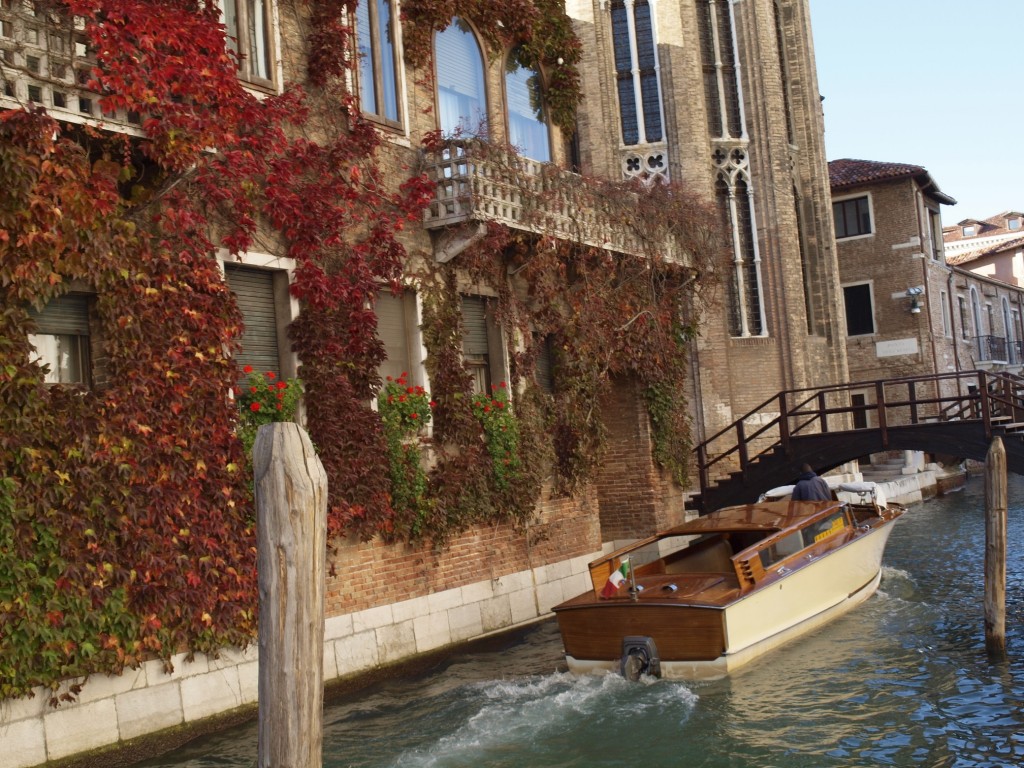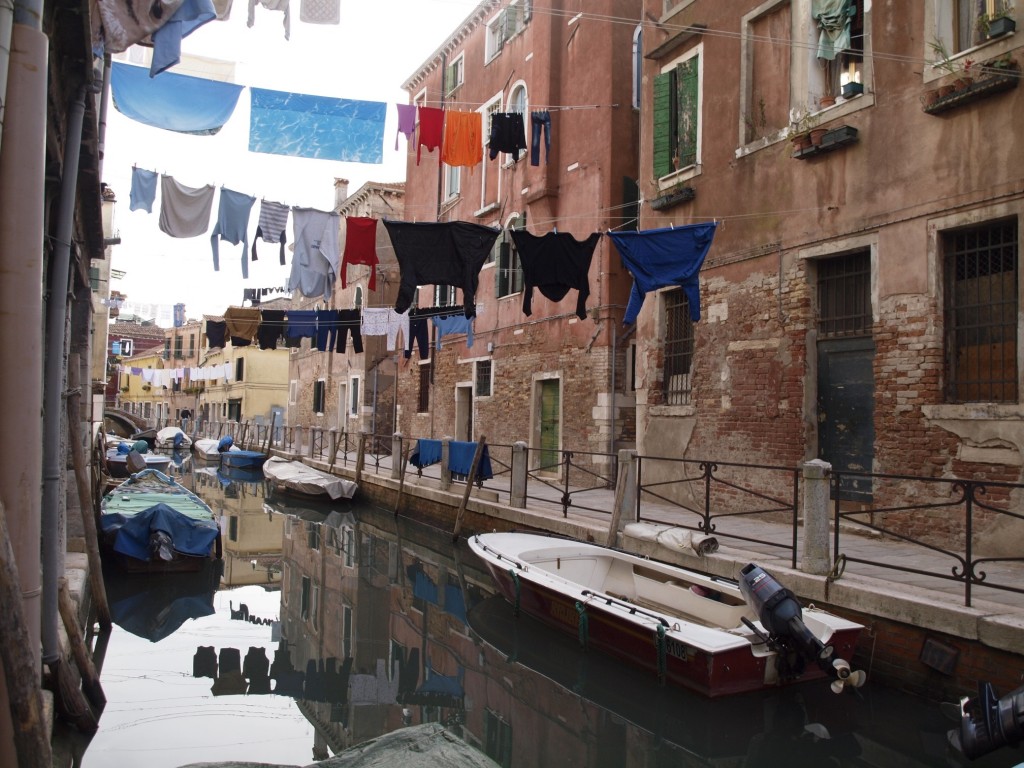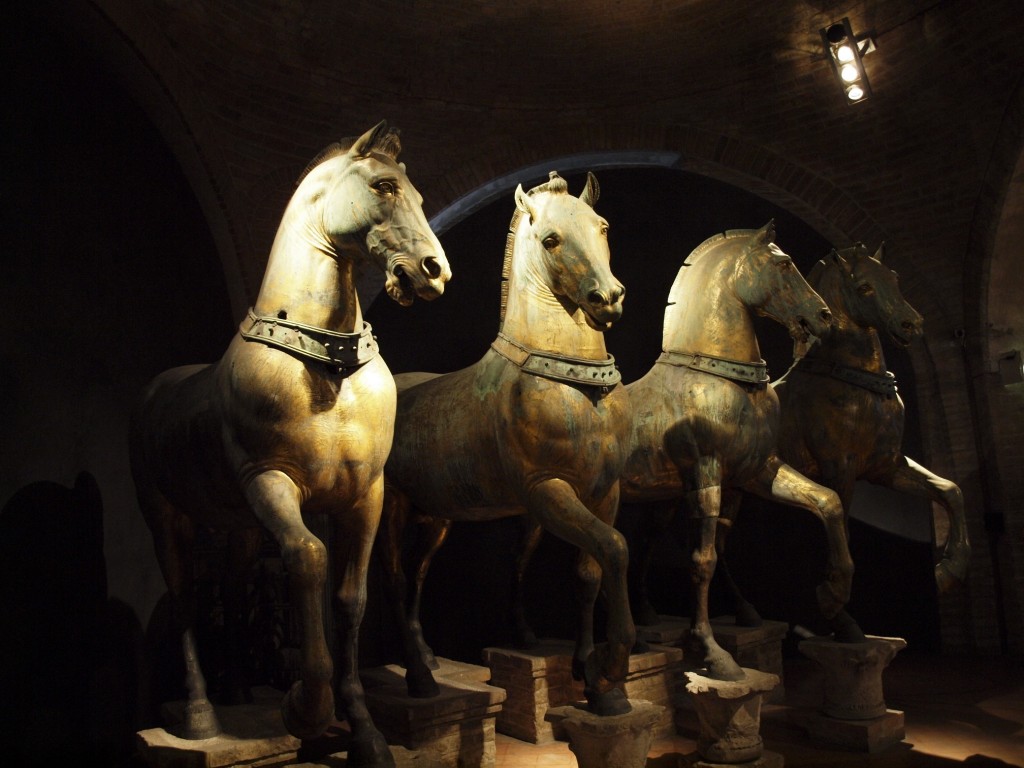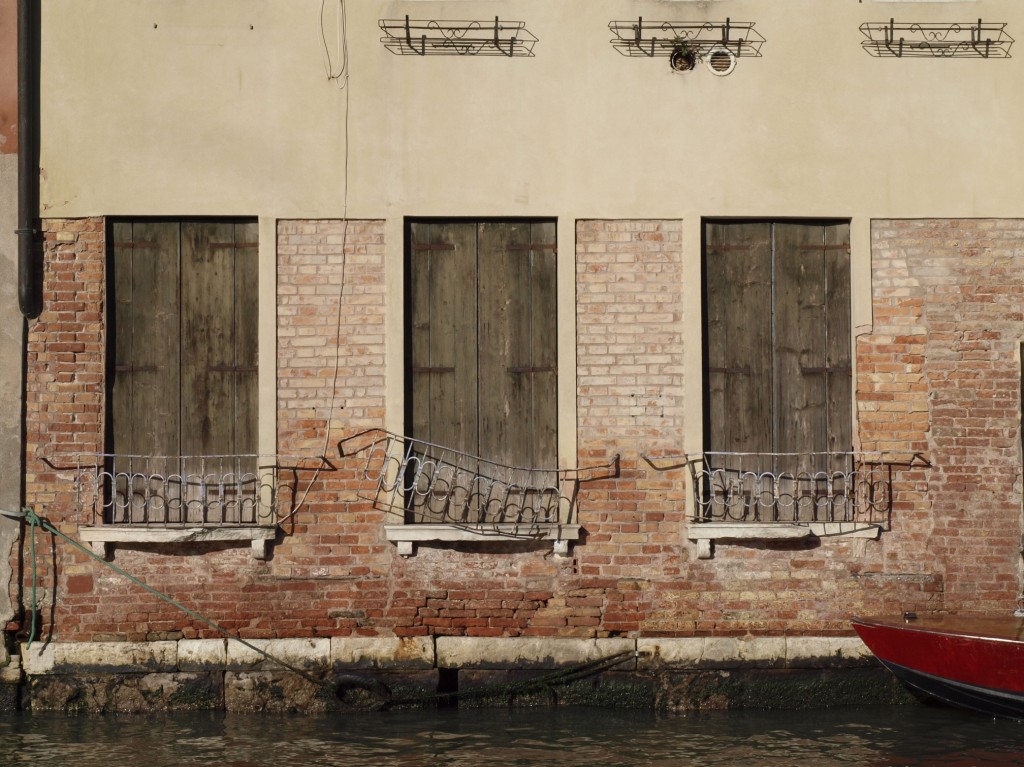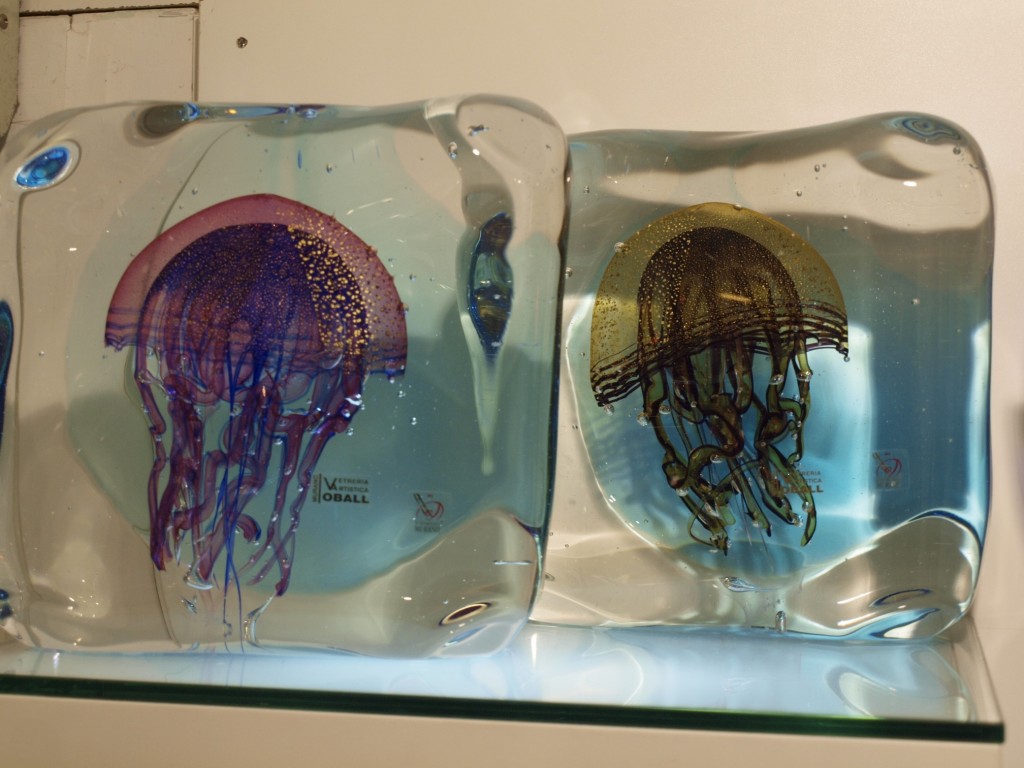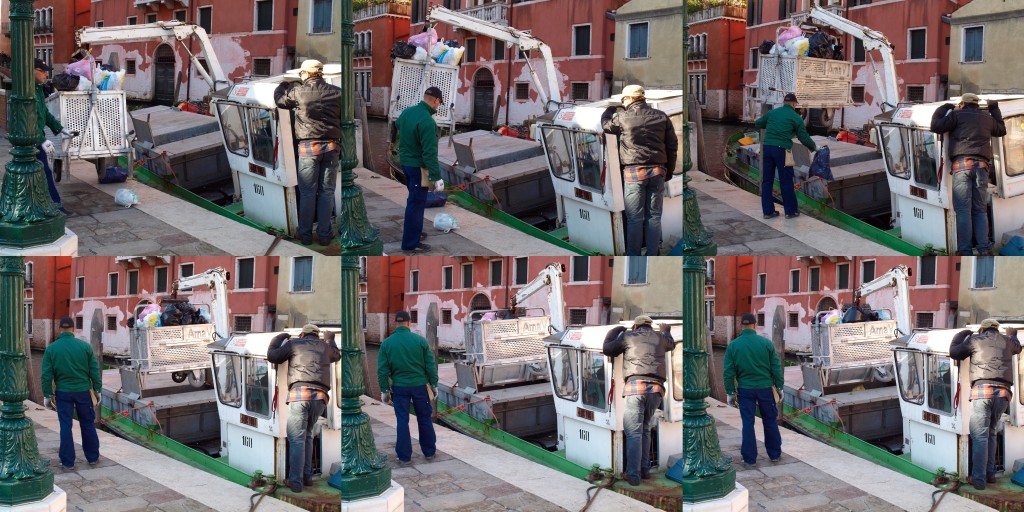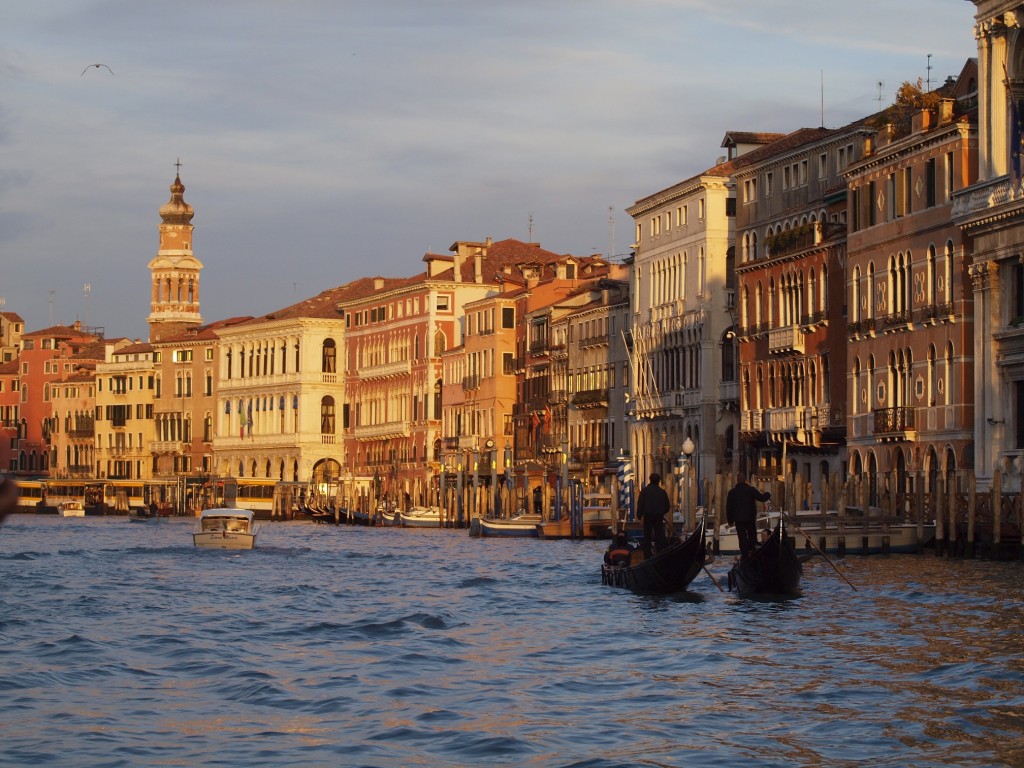The grand finale to our week-long trip (which included visits to Milan, Verona and Como) was Venice. After crossing the Ponte delle Liberta’, the bridge that connects Venice’s center to the mainland, we got off our bus- it was already night. Thus, our first images of Venice were that of the Grand Canal as we made our way towards Piazza San Marco on a boat bus, vaporetto. Because of our number, we stayed at two different hotels, but both were only minutes away by foot from Piazza San Marco. Although we had very miserable weather for our entire trip thus far, once in Venice, everything cleared up and we had only bright sunshine and blue skies.
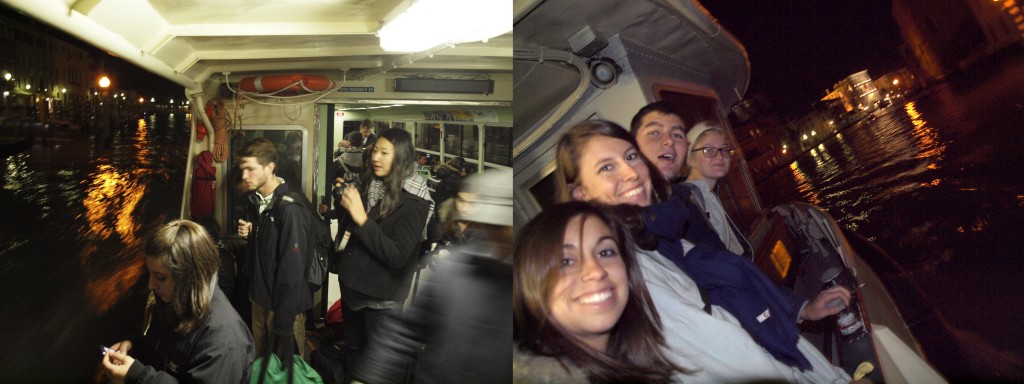
Wandering around the many small and hidden backstreets of Venice, you would stumble upon charming piazza spaces, interesting façades and wonderful shops and restaurants. Of course, Venice is invaded by tourism, but I found it less bothersome that the tourism culture of Rome. Although many shops in Venice were tourist rip-off traps, there were also many with an amazing showcase of Venetian art. Most notably were the Murano Glass and Comedia dell’Arte mask stores. In the more authentic stores, you could find a craftsman decorating the many different types of masks. If you wanted to see glass blowing, you had to visit the Island of Murano- something, unfortunately, none of us had time to do. There were also some of the best museums, the Peggy Guggenheim Collection likely topping that list. At night, however, I was surprised to find that not much goes on in Venice besides fancy late dinners and a couple bars with live music. There were no evening festivities, concerts, events, social gatherings or much nightlife at all. We were told that all that happened on the mainland, on the perimeter of the lagoon.
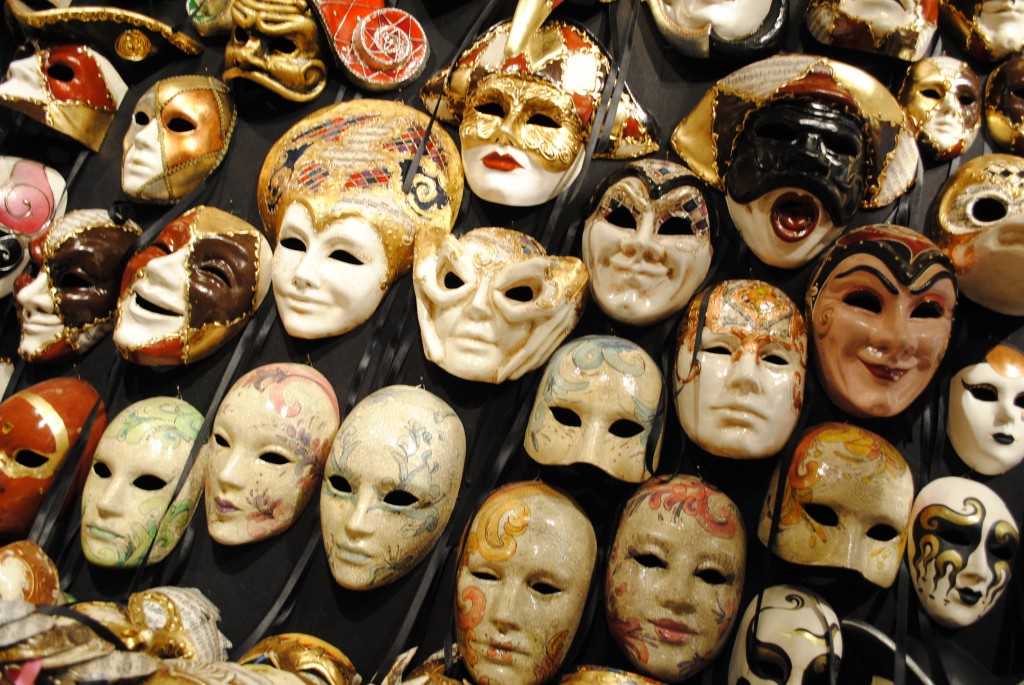
Venice is a bizarre city pegged up on a rising lagoon. As a consequence, there are all types of weird contraptions and vehicles that have been created to maintain urban life. There are taxi–boats, ambulance-boats, fireboats, garbage-boats, delivery boats and crane-boats, everything must circulate on water. When Venice floods and the sidewalks are covered in water, which occurs about a hundred times a year, a vast network of elevated walkways gets quickly deployed. I was disappointed that Venice did not flood while we were there, to see the city transformed. But the evidence was everywhere from floodgates on street-level opening to markings of past flood levels. It’s also evident that the water level has greatly increased since the original planning of Venice. Stone stairs that were meat to be descended to lower docks are now entirely submerged and disappear into the murky water. The sidewalk level often is insufficient to prevent the splatter of small waves and boats’ wakes from overflowing. I kept on wondering how much longer this city will be able to survive with reasonable resources.
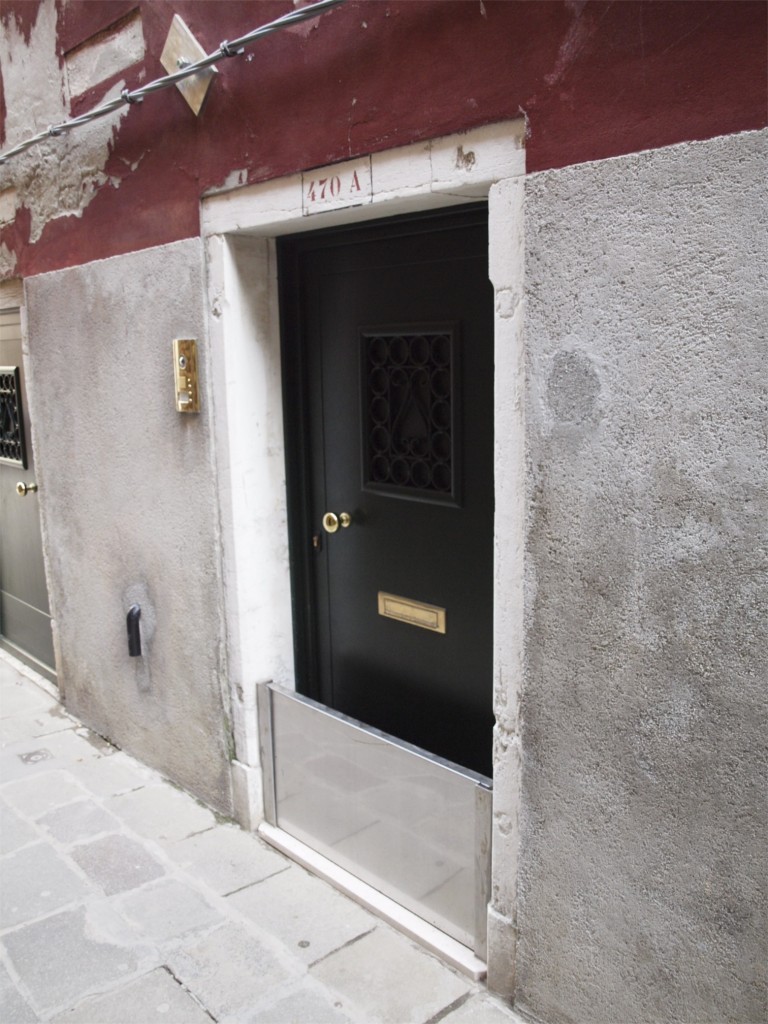
Leaving Venice and making our way back down the Grand Canal, on the same boat that brought us there, I imagine that we all were sad to leave and wished we could have more time. After traveling and seeing so many amazing sites at such a fast pace, it is both relaxing and boring to be on our way back to Rome. I will certainly visit Venice again.
